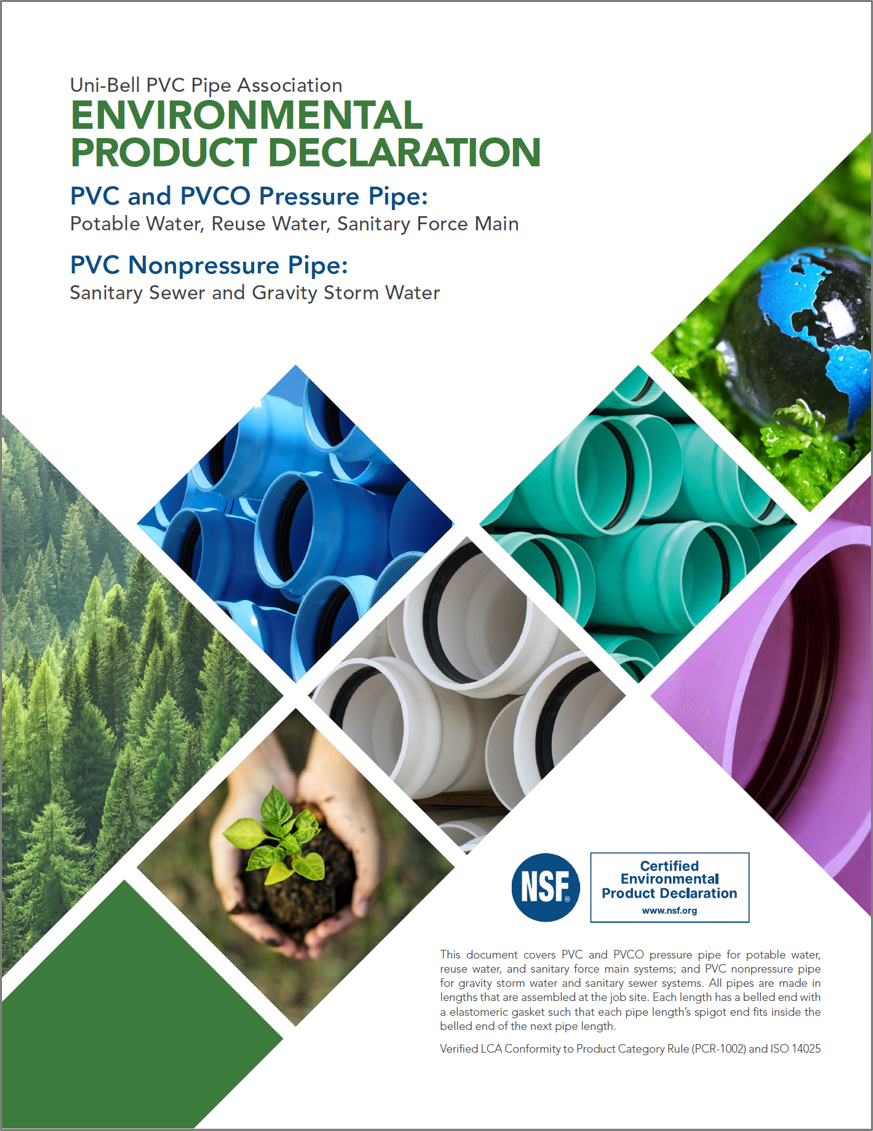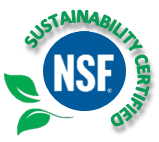 In the sustainability world, many manufacturers claim that their products are “green.” Often the evidence supporting these claims is questionable at best. However, for municipalities to meet their green infrastructure goals, the most transparent, science-based, and accurate information is needed. This is what the 2015 Environmental Product Declaration (EPD) for PVC water and sewer pipe has done. The document was:
In the sustainability world, many manufacturers claim that their products are “green.” Often the evidence supporting these claims is questionable at best. However, for municipalities to meet their green infrastructure goals, the most transparent, science-based, and accurate information is needed. This is what the 2015 Environmental Product Declaration (EPD) for PVC water and sewer pipe has done. The document was:
- Developed in compliance with the International Organization for Standardization (ISO) 14025 standard, the most rigorous and transparent available.
- Based on a Life Cycle Assessment (LCA) according to the ISO 14040 series standards that was peer-reviewed by an independent third-party panel of sustainability experts.
- Certified by NSF Sustainability, a division of global health organization NSF International.
 NSF Sustainability reviewed and verified the LCA (on which the EPD is based) as well as the EPD documents themselves. NSF ensured that all applicable rules were followed and that no unsubstantiated claims were made. Additionally, NSF confirmed the health and safety of PVC pipes:
NSF Sustainability reviewed and verified the LCA (on which the EPD is based) as well as the EPD documents themselves. NSF ensured that all applicable rules were followed and that no unsubstantiated claims were made. Additionally, NSF confirmed the health and safety of PVC pipes:
“PVC pipe and fittings are resistant to chemicals generally found in water and sewer systems, preventing any leaching or releases to ground and surface water during the use of the piping system. No known chemicals are released internally into the water system. No known toxicity effects occur in the use of the product.”
The PVC pipe industry is proud of its NSF certifications. NSF International has been evaluating the safety of piping materials used in North America’s water systems for almost 80 years. Unfortunately, a recent report by misinformed environmental groups attempts to disparage the impartiality and professionalism of NSF, including its testing protocols. NSF has responded to these unfounded allegations. See NSF’s White Paper titled, “The Truth About NSF/ANSI/CAN 61 and PVC Pipes”.
 To stay relevant, EPDs are required to be renewed periodically. This is why the PVC pipe industry updated its original document which was published in 2015. The second EPD was released on March 21, 2023. New data, analysis, and certification have confirmed what those of us in the industry have known all along – PVC pipe is a very environmentally friendly product:
To stay relevant, EPDs are required to be renewed periodically. This is why the PVC pipe industry updated its original document which was published in 2015. The second EPD was released on March 21, 2023. New data, analysis, and certification have confirmed what those of us in the industry have known all along – PVC pipe is a very environmentally friendly product:
- The 2023 EPD shows an overall 6% reduction of embodied carbon and most other environmental impacts compared to the 2015 EPD.
- There was a 20% reduction in electricity use during the extrusion process and a 66% reduction in water use during PVC pipe manufacturing.
- PVC water and sewer pipe continues to have the lowest carbon footprint and environmental impacts of all underground piping materials.
Click here to access the 2023 PVC pipe EPD (See pages 4-5 for the Executive Summary).
The PVC pipe industry continues to do it right by providing the most objective, transparent, and high-quality data on its health, safety, and environmental performance. Other pipe materials should follow suit.